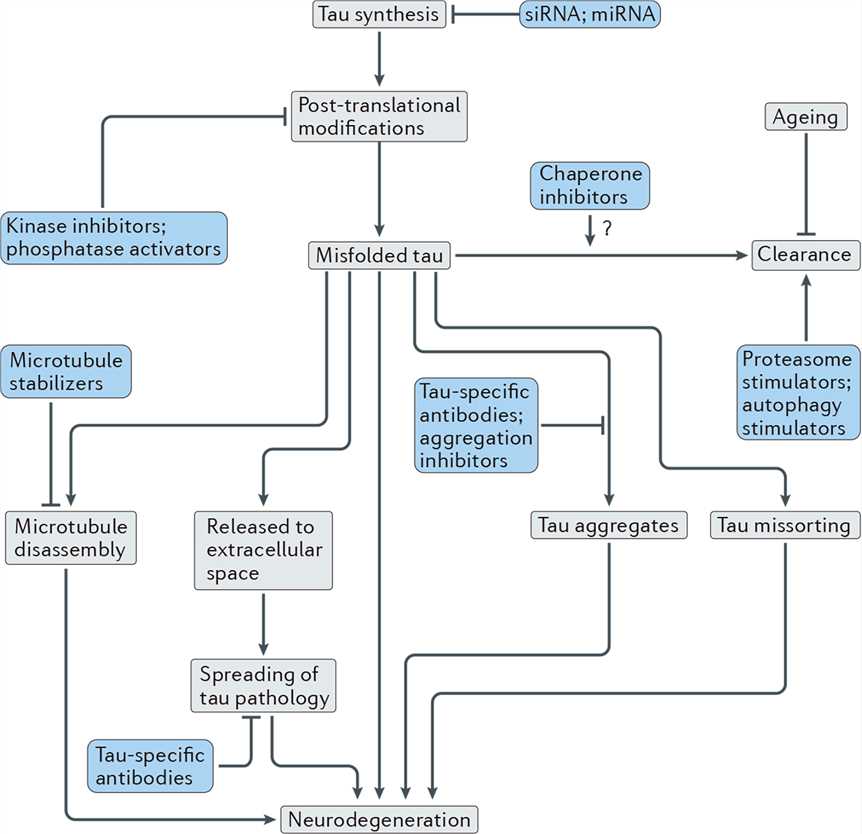Neurofibrillary tangles (NFTs) are one of the primary neuropathological hallmarks of Alzheimer’s disease (AD). NFTs are intracellular aggregates composed of the hyperphosphorylated tau protein. Physiologically, tau is a natively unfolded, highly soluble microtubule-associated protein (MAP) that is found primarily in the central nervous system, specifically in the axons of mature neurons, and is involved in regulating the microtubule stability and intracellular trafficking. The tau protein can undergo various forms of post-translational modifications, and the most extensively studied of which is phosphorylation. In AD, tau becomes hyperphosphorylated, and hyperphosphorylation of tau causes it to transform into paired helical filaments (PHFs) and NFTs. Pathological tau can cause microtubule disorders leading to neuronal degeneration.
Strategies Targeting Tau Pathology
Each stage of tau pathology development, from the gene expression and splicing to post-translational modifications, aggregation, and impairments in clearance, offers potential opportunities for intervention.

Figure 1. Tau-related therapeutic targets and therapeutics. (Wang Y, Mandelkow E. Tau in physiology and pathology. Nature Reviews Neuroscience. 2016, 17(1): 22.)
Current Status of Tau-targeting Therapeutics for AD
The development of therapeutics for AD has focused mainly on amyloid β (Aβ), but most drug development based on the Aβ cascade hypothesis ends in clinical failure, suggesting that Aβ may not be the best therapeutic target. Besides, given that tau pathology correlates better with neuron loss and cognitive impairment than do Aβ lesions, tau-targeting strategies have received more attention in recent years.
Early potential anti-tau therapeutics were based primarily on inhibiting pathological tau phosphorylation or aggregation, or on stabilizing microtubules, but most of these approaches have been discontinued due to adverse reactions or lack of efficacy. Currently, most of the tau-targeting therapeutics in clinical trials are immunotherapies. Moreover, continuing basic research on the underlying causes of AD and the mechanism of tau pathology is crucial to identify novel targets.
If you are paying attention to tau-targeting therapeutics and are looking for further research advances, Alzheimacy can meet your needs for basic and preclinical research. Please feel free to contact us.